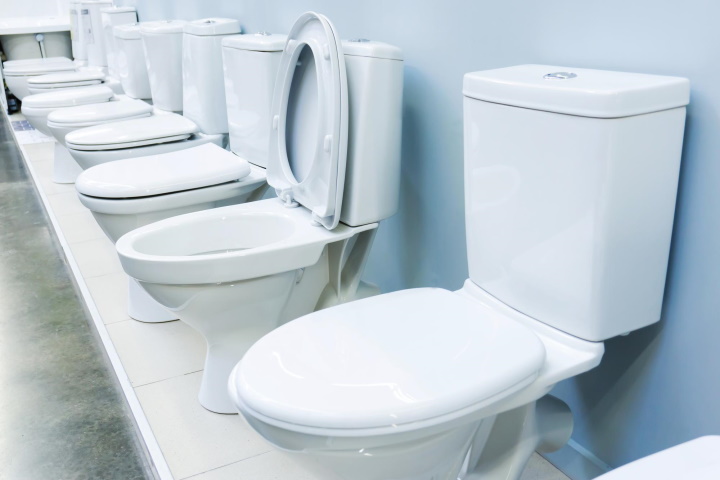
How to go about purchasing a new toilet is something most people don’t think about until it’s time to replace an old one. Once you start browsing you’ll quickly realise that you are faced with more choices than you expected and need to make a complex decision in the right price range, but also figure out which toilet is best for your home.
The typical toilet suite
All toilets, regardless of design, typically have the same two-part system making up the toilet suite. The cistern holds the flush devices and water reserve, and the bowl (or pan) is the grounded section making up of the seat, pan and sewage connection. The only real difference is the set out of the pipes in the pan.
The S trap, P trap and skew trap – the set out
Before you get down to choosing your colours, styles and prices, you’ll need to start with the type of toilet you need. There are three types, each with a different sewage exit path.
The S TrapThe P Trap
The Skew Trap
The way the pipes bend from the bowl out does make a difference to the way your toilet is positioned and how you use your space.
S Trap - this is shaped to loop down and connect to pipes below in the floor. These toilets are set on the ground and are the most typical for Australian homes.
P Trap - These pipes connect through the back wall. The pan is typically wall-mounted which has the advantage of giving your greater choices for placement height.
Skew Trap -This is the most compact version although not commonly found in Australian bathrooms. It has the advantage of fitting nicely into cramped spaces as the waste water is able to flow around either side of the pan.
Changing to a different toilet type is possible but expensive. Typically plumbers will recommend like-for-like exchanges, to keep things smooth and easy.
Water inlets
As well as pipe differences in the pan, you also have a choice of inlets for the cistern. This will determine how fresh water is delivered to fill the reserve.
The two water inlet types are:
Bottom inlet - a flexible copper pipe is located underneath the cistern. In this case, the plumbing will be exposed and connected visibly to the water source, usually by some form of tap
Back inlet - the copper pipe is located at the back of the cistern, out of sight and neat. It requires less cleaning but will most likely require a qualified plumber to complete the installation.
Modern cisterns usually enable both options. If your preferred new cistern only has one water inlet option, you can talk to a qualified plumber about making some slight alterations to make it fit.
Toilet designs
The range of toilet designs and budgets and brands is impressive with plenty of mix and match options to get the exact look and feel you are aiming for.">
Here are the main options you’ll see as you browse:
Link, or connector toilets
The top cistern is wall-mounted and usually at some height above the pan. A standard pipe is used to connect the two. Although they’ve been around for a long time the link toilet is still a popular choice given that it is easy to install and the most budget-friendly option.
Close-coupled toilets
You can close the gap and hide the plumbing by choosing a cistern and pan that come together. While still separate units, the cistern is placed directly at the back of the pan for less cleaning and more appeal.
Back to wall toilets
Back to wall toilets are flush with the wall and have a smooth enclosed base. As you move into more modern toilets you get great opinions to completely close in the pan, hiding the pipework and reducing the need for cleaning and awkward dusting. However, the prices for newer designs can get high, especially with bigger brands.
Concealed cistern toilets
If the look of the cistern puts you off you can hide it completely and just have the flush buttons showing. Panel access will allow your plumber to access your unit if needed, leaving you with more space and a modern, clean look. While the pan and cistern are sold individually, the pan options here are usually enclosed to complete the neat look. You just need to make sure you choose a cistern and pan that are compatible.
Toilet seats
Slamming toilet lids is a problem you can avoid with a new soft closing lid design. All it takes is a gentle nudge and the seat closes slowly, with minimum impact and sound.
If you find it hard to clean the entire bowl rim, you can choose a quick-release lid that is able to be fully removed for easy cleaning.
Bidets and smart toilets
The bidet, popular in Europe, can easily be installed on your toilet with little plumbing work and no modifications. Although for more complex bidets you will be looking at a new toilet seat and access to power, you can usually manage simple jobs with a do-it-yourself kit attaching an adapter to the inlet hose.
Other options, like the smart toilet, come with all the trimmings including water temperature control, pressure control and LEDs.
With so many toilet choices when refurbishing your bathroom, it pays to do your research and discuss plans with a professional plumber to get an accurate idea of your needs and the costs involved.
| < Prev | Next > |
|---|




